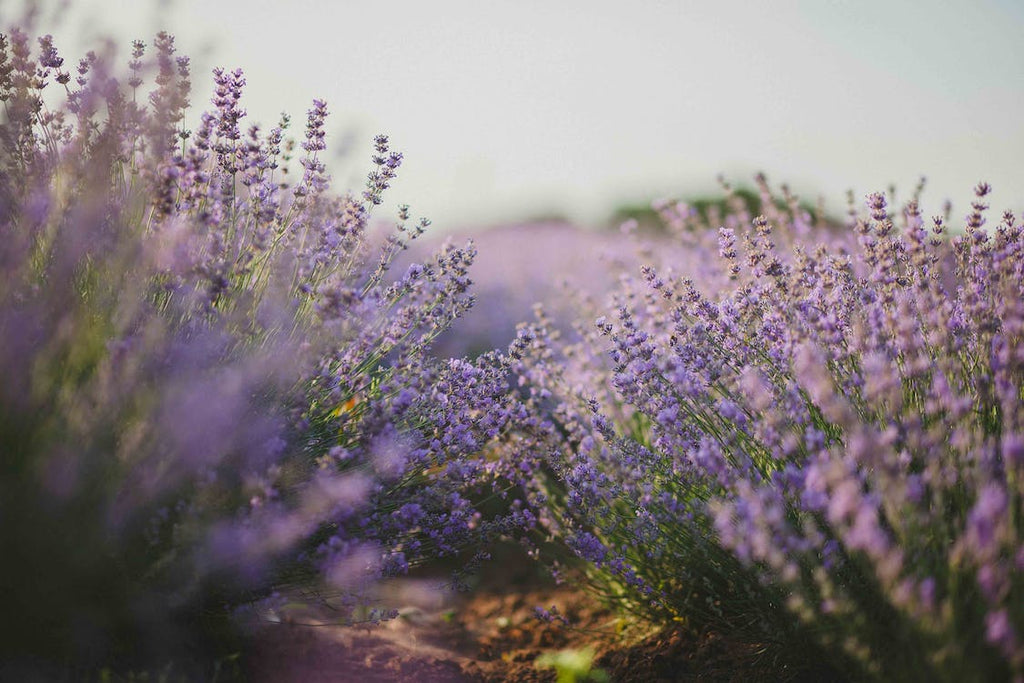
As with so many human pursuits, gardening has generated a fair amount of jargon—specialized vocabulary that allows gardeners to communicate ideas quickly and easily. While that’s useful for folks who know the lingo, it can be a little confusing for beginners. Adding to that, there are complexities and nuances to most words, and for those of us who don’t know them it can lead to miscommunication and misunderstanding. So in an effort to clear things up, we’re going to devote this blog to three key gardening concepts: annuals, perennials, and biennials. What do these words mean, exactly, and how do they apply to your garden? There are some important considerations in comparing annuals vs perennials vs biennials, so let’s dig in.
Annuals
Annuals are plants which complete their life cycles in one season or on year—they grow, flower, produce seeds, and then die in that span of time. Annuals have evolved this way in order to spread their seeds as widely and effectively as possible, given their niche in the natural world. If you want to grow them again in your garden, you’ll have to replant them in the appropriate season—generally, but not always, the spring. In order to do this, you can either buy new seeds or save seeds from the prior year’s plants.
Annuals fall into one of three categories, based on their ability to tolerate cold weather and frost. While these aren’t hard and fast botanical terms, they are helpful if you’re selecting plants for your garden space and want to know how they’ll cope with your climate:
- Tender annualsare warm weather plants, that thrive when temperatures are relatively high and have relatively little tolerance for cold, frost, and freezing temps. Begonias, marigolds, pansy, impatiens, and tender herbs like basil, cilantro, and coriander are all examples of common tender annuals.
- Half-hardy annualsare able to tolerate a bit of cold weather and some degree of freezing and frost. Lettuce, cauliflower, larkspur, cosmos, and zinnias are popular garden plants which are half-hardy.
- Hardy annualshave a much greater tolerance for winter weather and can tolerate some degree of frost. Some brassicas are hardy annuals, including broccoli, as are radishes, peas, spinach, and chard. Calendula, cosmos, and zinnias are common hardy annual decorative plants.

Perennials
In contrast to annuals, perennials are plants which live for three or more growing seasons, playing out their life cycle over a longer period of time. Perennials hold a strong appeal for many gardeners—they’re a lot less work than annuals as they don’t need to be replanted every year! The trade off is that ornamental perennial plants many not flower in their first year, and tend to have shorter blooming seasons than many annuals. This means that for landscaping or decorative purposes we’ll need to pair them with other perennials that flower at different times, or with annuals that flower throughout the year. Some of the most popular and best-loved garden plants are perennials, including such wonders as roses, lavender, rosemary, sage, peony, hosta, and flowering shrubs like azaleas.
Like their annual counterparts, perennials break down into the same three categories—tender, half-hardy, and hardy. This is important to know about your perennials; it’s not fun to mistakenly plant a half-hardy perennial in a carefully prepared bed and have it die over the winter!
- Tender Perennialsmay thrive throughout the year in a warm climate, but need protection when the weather turns cold. Many popular garden veggies are tender perennials, including tomatoes, chilies, bell peppers, and eggplant. Decorative tender perennials include dahlias, petunias, and some coneflowers. These plants need protection from the cold, which may involve bringing them inside during the winter.
- Half-hardy perennialscan withstand cold snaps fairly well, but may suffer in sustained cold. These include common ornamentals like daylilys and hostas. Some gardeners consider mint a half-hardy perennial, as in extreme cold can cause them to die back until weather warms up.
-
Hardy perennialsdeal with cold weather fairly well, although how that looks may depend on the plant in question. Some die back and reemerge when things warm up, some go dormant, and some just keep going through the cold and frost. Rosemary, lavender, sage, potatoes, and asparagus are all hardy perennials, as are hydrangeas, bachelor’s buttons, and feverfew.

Biennials
Biennials are an interesting class of plants, falling somewhere between annuals and perennials in that they need two years to complete their life cycles of growing, flower/fruiting, and producing seeds. Generally they do this by growing during the first year and then going dormant over the winter before flowering and producing seeds in the second year. This may sound strange, but some of our most popular garden plants are biennials, including collards, kale, celery, carrots, onions, and garlic. While many gardeners classify biennials as tender, half-hardy, or hardy just as they do with annuals and perennials, that tends to depend greatly on climate so we’ll likely need to address it in a future blog.

We hope that this article gives you some grounding in the vocabulary we use around annuals, perennials, and biennials, and thus helps you make the right choices for your garden this year and in years to come. We’d love to hear about your experiences with all of these plants, so please get in touch!

Leave a comment